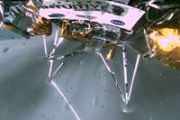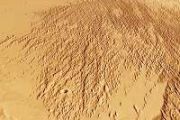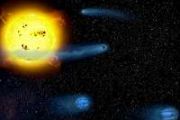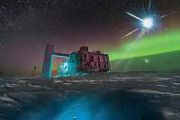
Copernical Team
UT Austin researchers advance magnetic fusion design with new confinement method
 Abundant and affordable clean energy moved a step closer to realization thanks to a breakthrough by scientists from The University of Texas at Austin, Los Alamos National Laboratory, and Type One Energy Group. Their work addresses a critical obstacle in developing viable fusion energy systems.
Fusion reactors aim to confine high-energy alpha particles to sustain the extreme plasma conditio
Abundant and affordable clean energy moved a step closer to realization thanks to a breakthrough by scientists from The University of Texas at Austin, Los Alamos National Laboratory, and Type One Energy Group. Their work addresses a critical obstacle in developing viable fusion energy systems.
Fusion reactors aim to confine high-energy alpha particles to sustain the extreme plasma conditio NASA Data Helps Map Tiny Plankton That Feed Giant Right Whales
 In the waters off New England, one of Earth's rarest mammals swims slowly, mouth agape. The North Atlantic right whale filters clouds of tiny reddish zooplankton - called Calanus finmarchicus - from the sea. These zooplankton, no bigger than grains of rice, are the whale's lifeline. Only about 370 of these massive creatures remain.
For decades, tracking the tiny plankton meant sending rese
In the waters off New England, one of Earth's rarest mammals swims slowly, mouth agape. The North Atlantic right whale filters clouds of tiny reddish zooplankton - called Calanus finmarchicus - from the sea. These zooplankton, no bigger than grains of rice, are the whale's lifeline. Only about 370 of these massive creatures remain.
For decades, tracking the tiny plankton meant sending rese Unified theory of gravity may edge physics closer to ultimate breakthrough
 At long last, physicists may be nearing a breakthrough that unifies gravity with electromagnetism and the strong and weak nuclear forces. For decades, the challenge has been reconciling quantum field theory with Einstein's general relativity-a task that generations of scientists have pursued without success.
Now, researchers at Aalto University have proposed a new quantum theory of gravity
At long last, physicists may be nearing a breakthrough that unifies gravity with electromagnetism and the strong and weak nuclear forces. For decades, the challenge has been reconciling quantum field theory with Einstein's general relativity-a task that generations of scientists have pursued without success.
Now, researchers at Aalto University have proposed a new quantum theory of gravity NAL unveils SHOUT tracker upgrades powered by Iridium Enhanced SBD service
 NAL Research has integrated Iridium's Enhanced Short Burst Data (ESBD) technology into its SHOUT series of tracking devices, reinforcing its role in providing advanced wireless and assured position, navigation, and timing (APNT) solutions. This enhancement is designed to support secure and resilient communications for the U.S. Department of Defense and other authorized government partners.
NAL Research has integrated Iridium's Enhanced Short Burst Data (ESBD) technology into its SHOUT series of tracking devices, reinforcing its role in providing advanced wireless and assured position, navigation, and timing (APNT) solutions. This enhancement is designed to support secure and resilient communications for the U.S. Department of Defense and other authorized government partners. NASA's Webb Lifts Veil on Common but Mysterious Type of Exoplanet
 Though they don't orbit around our Sun, sub-Neptunes are the most common type of exoplanet, or planet outside our solar system, that have been observed in our galaxy. These small, gassy planets are shrouded in mystery...and often, a lot of haze. Now, by observing exoplanet TOI-421 b, NASA's James Webb Space Telescope is helping scientists understand sub-Neptunes in a way that was not possible pr
Though they don't orbit around our Sun, sub-Neptunes are the most common type of exoplanet, or planet outside our solar system, that have been observed in our galaxy. These small, gassy planets are shrouded in mystery...and often, a lot of haze. Now, by observing exoplanet TOI-421 b, NASA's James Webb Space Telescope is helping scientists understand sub-Neptunes in a way that was not possible pr New models challenge the black hole singularity concept
 Physicists continue to grapple with the elusive singularities believed to reside at the cores of black holes, a concept long regarded as signaling the breakdown of known physical laws. Stefano Liberati, director of IFPU, invokes the Latin phrase "Hic sunt leones" to describe this uncharted territory. The phrase historically marked unexplored regions on maps-an apt metaphor for the unknown physic
Physicists continue to grapple with the elusive singularities believed to reside at the cores of black holes, a concept long regarded as signaling the breakdown of known physical laws. Stefano Liberati, director of IFPU, invokes the Latin phrase "Hic sunt leones" to describe this uncharted territory. The phrase historically marked unexplored regions on maps-an apt metaphor for the unknown physic MIT physicists snap the first images of "free-range" atoms
 MIT physicists have captured the first images of individual atoms freely interacting in space. The pictures reveal correlations among the "free-range" particles that until now were predicted but never directly observed. Their findings, appearing in the journal Physical Review Letters, will help scientists visualize never-before-seen quantum phenomena in real space.
The images were taken us
MIT physicists have captured the first images of individual atoms freely interacting in space. The pictures reveal correlations among the "free-range" particles that until now were predicted but never directly observed. Their findings, appearing in the journal Physical Review Letters, will help scientists visualize never-before-seen quantum phenomena in real space.
The images were taken us NASA Kennedy Breathes Life into Moon Soil Testing
 As NASA works to establish a long-term presence on the Moon, researchers have reached a breakthrough by extracting oxygen at a commercial scale from simulated lunar soil at Swamp Works at NASA's Kennedy Space Center in Florida. The achievement moves NASA one step closer to its goal of utilizing resources on the Moon and beyond instead of relying only on supplies shipped from Earth.
NASA Ke
As NASA works to establish a long-term presence on the Moon, researchers have reached a breakthrough by extracting oxygen at a commercial scale from simulated lunar soil at Swamp Works at NASA's Kennedy Space Center in Florida. The achievement moves NASA one step closer to its goal of utilizing resources on the Moon and beyond instead of relying only on supplies shipped from Earth.
NASA Ke Searching for Spherules to Sample
 Over the past few weeks, Perseverance has been investigating some curious spherules peppered across the "Witch Hazel Hill" region along the rim of Jezero crater. A striking cluster of the small bubble-shaped stones were first spotted by the Mastcam-Z instrument on Sol 1442 (March 11, 2025) at "Broom Point," in a rock named "St. Pauls Bay." A few sols later, a similar assemblage was discovered by
Over the past few weeks, Perseverance has been investigating some curious spherules peppered across the "Witch Hazel Hill" region along the rim of Jezero crater. A striking cluster of the small bubble-shaped stones were first spotted by the Mastcam-Z instrument on Sol 1442 (March 11, 2025) at "Broom Point," in a rock named "St. Pauls Bay." A few sols later, a similar assemblage was discovered by India's woman fighter pilot trailblazer eyes space
 The excited little girl who first touched a plane two decades ago is now flying high as the face of India's fast-modernising military and its only woman Rafale fighter pilot.
"This is where my adventure began," Shivangi Singh, 29, told AFP at the Air Force Museum in New Delhi, recalling her first visit as a child when she "gawked" and "immediately knew that I wanted to become a pilot".
W
The excited little girl who first touched a plane two decades ago is now flying high as the face of India's fast-modernising military and its only woman Rafale fighter pilot.
"This is where my adventure began," Shivangi Singh, 29, told AFP at the Air Force Museum in New Delhi, recalling her first visit as a child when she "gawked" and "immediately knew that I wanted to become a pilot".
W 


































